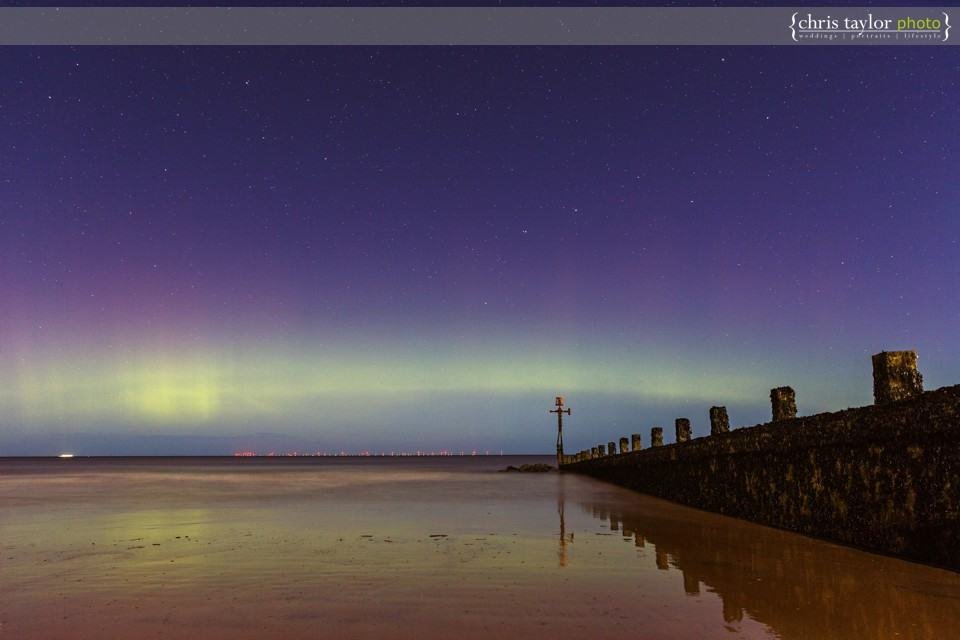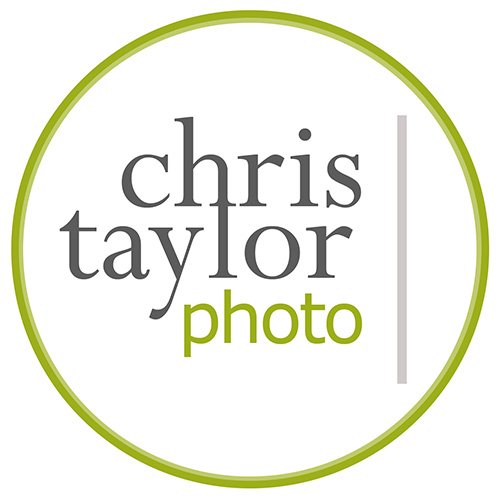How to see & photograph the aurora borealis from North Norfolk
I'd always wanted to see the northern lights and up until a couple of years ago I had no idea that they were occasionally visible from Norfolk.In this post I hope to answer some questions people often ask me after posting photos of the northern lights such as -"How can I see the northern lights in Norfolk?", 'Where is the best place to see the aurora?", "How can I photograph the northern lights?"• So what causes the aurora exactly?According to Wikipedia it's this... 'Auroras are produced when the magnetosphere is sufficiently disturbed by the solar wind that the trajectories of charged particles in both solar wind and magnetospheric plasma, mainly in the form of electrons and protons, precipitate them into the upper atmosphere (thermosphere/exosphere), where their energy is lost. The resulting ionization and excitation of atmospheric constituents emits light of varying colour and complexity.' • How to see the aurora in NorfolkTo see the aurora as far south as Norfolk there needs to have been a significant geomagnetic storm. Geomagnetic activity is measured in a number of ways but one of the simplest is the Kp index which ranks the variations in geomagnetic activity from 0 to 9, in 3-hour intervals. The larger the Kp index is, the stronger the storm and the further south the northern lights will be visible. To see the aurora in Norfolk ideally we need a Kp of 7 or more.There are various ways to keep informed of the geomagnetic activity, my favourites are the Aurora Watch app and by following @aurora_alerts on Twitter which gives hourly forecasts.The aurora from the North Norfolk coast does require a very clear night and can be seen by looking North (unsurprisingly!), the clearest views are generally seen by getting away from light pollution so anywhere West of Sheringham - I've seen some fantastic shots taken from Cley, Blakeney & Morston although as yet I haven't ventured further than Skelding Hill in Sheringham!When the aurora is showing it generally appears as a green or pink glow in the sky to the North, just over the horizon although to really see the beauty of it you need to take a camera and do some long exposure shots....
• How to see the aurora in NorfolkTo see the aurora as far south as Norfolk there needs to have been a significant geomagnetic storm. Geomagnetic activity is measured in a number of ways but one of the simplest is the Kp index which ranks the variations in geomagnetic activity from 0 to 9, in 3-hour intervals. The larger the Kp index is, the stronger the storm and the further south the northern lights will be visible. To see the aurora in Norfolk ideally we need a Kp of 7 or more.There are various ways to keep informed of the geomagnetic activity, my favourites are the Aurora Watch app and by following @aurora_alerts on Twitter which gives hourly forecasts.The aurora from the North Norfolk coast does require a very clear night and can be seen by looking North (unsurprisingly!), the clearest views are generally seen by getting away from light pollution so anywhere West of Sheringham - I've seen some fantastic shots taken from Cley, Blakeney & Morston although as yet I haven't ventured further than Skelding Hill in Sheringham!When the aurora is showing it generally appears as a green or pink glow in the sky to the North, just over the horizon although to really see the beauty of it you need to take a camera and do some long exposure shots.... • How to photograph the auroraYou'll need to be shooting very long exposures so it's unlikely your iphone will be much use! You need a half decent camera which will allow 30 second exposures (generally), and a tripod to ensure the camera stays still throughout the exposure. To trigger the shutter without moving the camera you can use either a remote trigger (a button on the end of a cable or a wireless trigger) or my preferred method is the set the camera up on the tripod, turn on the self-timer to a 2 second delay, press the shutter button & step back. Most cameras have a self-timer button.Other tips: As it will probably be too dark to allow the camera to focus you'll probably need to manually set the focus to infinity (ie. the furthest the camera focuses at), take a torch with you so you can see the lens. If your camera allows it you ideally want to be shooting on Manual mode, shutter speed set to 30sec, aperture around f4 and keeping the ISO as low as you can to minimise digital noise, I usually go for 400-800 ISO. Take a test shot, if it needs more light open the aperture a little more or increase the ISO a little.Try to ensure the camera is level so that you have a level horizon!And there you go, good luck, wrap up warm and enjoy!
• How to photograph the auroraYou'll need to be shooting very long exposures so it's unlikely your iphone will be much use! You need a half decent camera which will allow 30 second exposures (generally), and a tripod to ensure the camera stays still throughout the exposure. To trigger the shutter without moving the camera you can use either a remote trigger (a button on the end of a cable or a wireless trigger) or my preferred method is the set the camera up on the tripod, turn on the self-timer to a 2 second delay, press the shutter button & step back. Most cameras have a self-timer button.Other tips: As it will probably be too dark to allow the camera to focus you'll probably need to manually set the focus to infinity (ie. the furthest the camera focuses at), take a torch with you so you can see the lens. If your camera allows it you ideally want to be shooting on Manual mode, shutter speed set to 30sec, aperture around f4 and keeping the ISO as low as you can to minimise digital noise, I usually go for 400-800 ISO. Take a test shot, if it needs more light open the aperture a little more or increase the ISO a little.Try to ensure the camera is level so that you have a level horizon!And there you go, good luck, wrap up warm and enjoy! For some more of my aurora photographs in Norfolk click here.
For some more of my aurora photographs in Norfolk click here.
